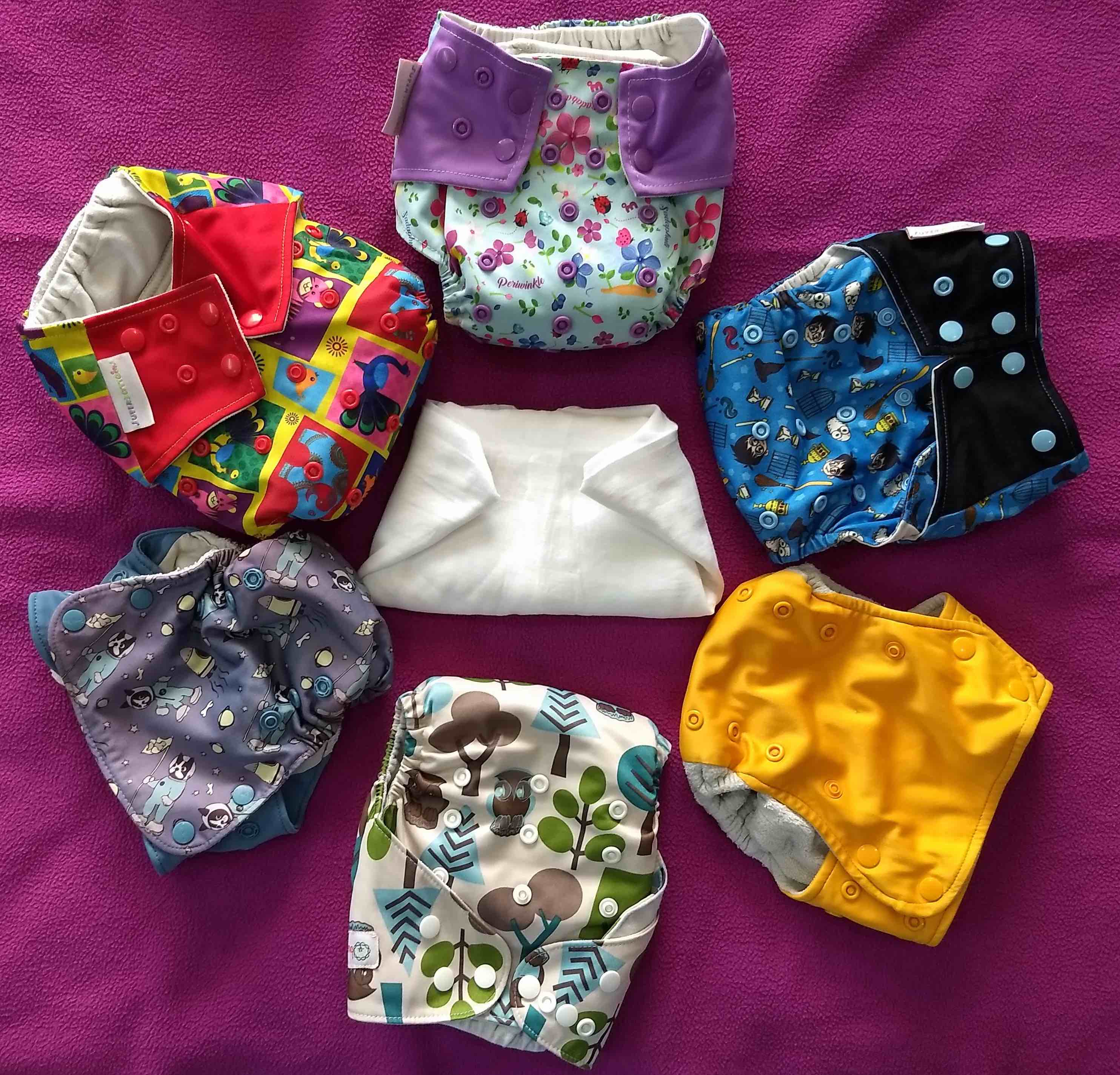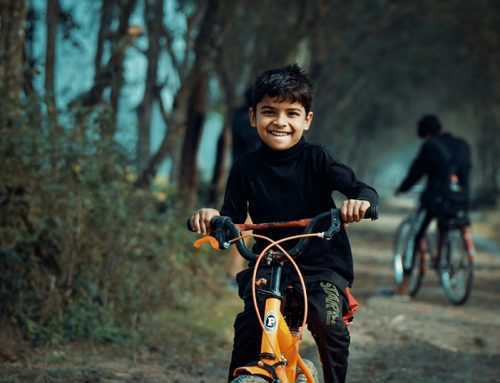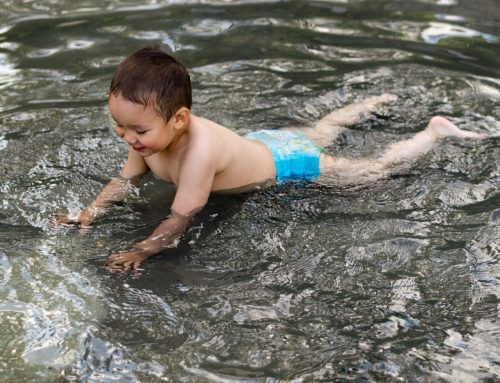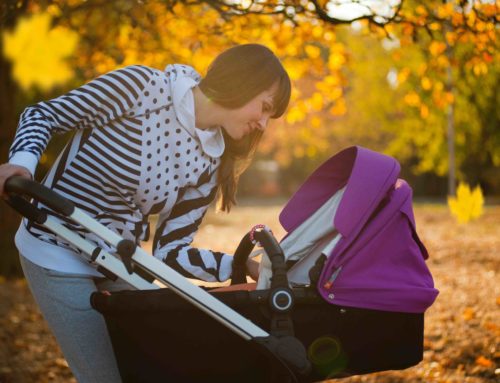In this 2nd part of the three-part guest post, Sumana helps you decode what a cloth diaper is, the various types of cloth diapers and different accessories useful in the clothing diapering journey.
At the end of this post, you should be able to decide which cloth diaper best suits your diapering needs.
Click here to read about why cloth diapers are an excellent choice for you and your baby.
What is a cloth diaper

Source: Superbottoms Family
When assembled, a cloth diaper does not look much different from a disposable. The essential elements of a cloth diaper that help to contain pee/poop without leak and enable adjustment as per baby’s size are:
- Water repellent outer layer
- Absorbent inner layer
- Gussets to contain the leak
- Optional stay dry layer touching the skin
- Snaps/velcro for fastening at waist
Cloth diapers usually have an outer water-repellent layer made of polyurethane laminate or PUL (nowadays even TPU) and inner absorbent layers of cloth. One may not use a waterproof outer layer especially if using flats or pre-folds ( these are thickly folded pieces of cloth, see types of cloth diapers for details about flats/pre-folds).
The strips of elastic, just like in panties, contains the wetness at the crease of the leg. These strips of elastic are called gussets. Some diapers have single gussets, while some have a double line of gussets.
 Cloth diapers also come with a stay dry layer that goes against the skin so that babies don’t feel the wetness, just like with disposables.
Cloth diapers also come with a stay dry layer that goes against the skin so that babies don’t feel the wetness, just like with disposables.
Snaps or Velcro straps, commonly known as hook & loop, secure cloth diapers around the waist.
Size and fastening adjustment in cloth diapers

Source: https://goo.gl/U7RCDP
The height of cloth diapers are adjustable with the help of snaps running down the front of the cloth diaper. The waist size can be adjusted with velcro/snaps along the waist of the diapers.
Cloth diapers come in two sizes – new-born and one-size. The newborn size lasts from 0-3 months of age and the one size, which is fully adjustable, grows with the baby, usually from 4 months to 36 months of age.
Note: Although cloth diapers appear bulkier than disposables, they do not cause any discomfort or disfigurement to babies. And don’t worry about the weight as those tiny tykes are stronger and much more resilient than we give them credit for.
Types of cloth diapers
Cloth diapers come in different varieties. Though they all contain pee/poop, each type is different design-wise and may serve a particular purpose (concerning absorbency, or ease of use, etc. ).
First, know what inserts are
 Inserts are the key component of cloth diapers. Inserts form the absorbent quotient and come in different materials with varying levels of absorbency and capacity to hold in liquids. The inserts can come pre-fabricated, stitched into rounded rectangles with layers of absorbency within. The number of layers of absorbency varies from insert to insert, influencing their thickness and price. Inserts are many times, unstitched pieces of cloth folded to form layers of absorbency.
Inserts are the key component of cloth diapers. Inserts form the absorbent quotient and come in different materials with varying levels of absorbency and capacity to hold in liquids. The inserts can come pre-fabricated, stitched into rounded rectangles with layers of absorbency within. The number of layers of absorbency varies from insert to insert, influencing their thickness and price. Inserts are many times, unstitched pieces of cloth folded to form layers of absorbency.
The insert material influences the rate of absorption as well as capacity to hold moisture (pee).
Following are the popular types of insert materials available:
- Microfibre
- Charcoal bamboo
- Bamboo
- Cotton Bamboo
- Cotton
- Hemp cotton
- Hemp
- Terry
- Muslin
Different types of cloth diapers
Following are the popular types of cloth diapers available. Each has a different design and may vary in terms of duration of use or absorbency.
Flats

source: https://goo.gl/eyaf2X
Flats are just large square pieces of absorbent cloth. It can be made from any material like muslin cloth, old tee-shirts to towels. It is the most cost-effective of all cloth diapers as the materials used are usually available at home. One can pad fold or kite fold the material and fasten around the waist with a Snappi or Boingo (see CD accessories for details). One can use them with a leakproof cover or without. Good for short-haul/daytime diapering.
Useful for 2-4 hours.
Pre-folds

source: https://goo.gl/H2oN3p
Pre-folds are similar to flats but have stitches running down the material, creating three sections. One can fold these section on top of each other to form a long rectangular stretch of the absorbent material. The centre part of the pre-fold which rests between the two lines of stitches also has extra material inside for enhanced absorbency. One can use them with a leakproof cover or without. Good for short-haul/daytime diapering.
Useful for 2-4 hours.
Covers
 Covers are just a PUL outer shell with snaps or hook and loop. Use them over flats or pre-folds or other inserts. Also, one can use the same cover several times before putting into the wash for the day. Useful for daytime diapering.
Covers are just a PUL outer shell with snaps or hook and loop. Use them over flats or pre-folds or other inserts. Also, one can use the same cover several times before putting into the wash for the day. Useful for daytime diapering.
Easily usable for 5-7 hours, unless soiled by poop.
Pocket Diapers
 Pocket diapers have an outer PUL/TPU shell and an inner stay dry lining either of micro-suede or micro-fleece. In between the outer protective shell and the inner lining is a pocket-like hollow space into which an insert should put to make the diaper fully functional. One can choose any insert or even pad-folded tee-shirts. The advantage of using pocket diapers is that one does not need to put the entire diaper into washing if peed in. One can simply replace the insert, and the diaper can remain on the bum through several insert changes. As a result, pocket diapers make for good daytime use when the baby is active and frequent insert changes are needed or possible.
Pocket diapers have an outer PUL/TPU shell and an inner stay dry lining either of micro-suede or micro-fleece. In between the outer protective shell and the inner lining is a pocket-like hollow space into which an insert should put to make the diaper fully functional. One can choose any insert or even pad-folded tee-shirts. The advantage of using pocket diapers is that one does not need to put the entire diaper into washing if peed in. One can simply replace the insert, and the diaper can remain on the bum through several insert changes. As a result, pocket diapers make for good daytime use when the baby is active and frequent insert changes are needed or possible.
Alternatively, when you are toilet training your child, you can use this diaper without an insert, acting as training pants. (more on training pants, later).
Useful for 3-6 hours.
Sleeve Diapers

source: https://goo.gl/uqkPhj & https://goo.gl/DFi6od
Sleeve diapers are nothing but pocket diapers with openings at both ends instead of one. It is called a sleeve because one can run one’s hand through it like in a shirt sleeve. This diaper functions the same way as a pocket diaper. Good for daytime diapering.
Useful for 3-6 hours.
Tongue Diapers
 Tongue diapers look like pocket diapers: with an outer shell and an inner lining and a pocket. But the insert is stitched to the diaper at the end where the opening for the pocket it. So, it hangs out like a tongue, and you should stuff it into the pocket for use. Which means, once soiled or wet, you need to put the entire unit into the wash. So, a tongue diaper is more of an all-in-one diaper than a pocket diaper in functionality. Useful for daytime diapering.
Tongue diapers look like pocket diapers: with an outer shell and an inner lining and a pocket. But the insert is stitched to the diaper at the end where the opening for the pocket it. So, it hangs out like a tongue, and you should stuff it into the pocket for use. Which means, once soiled or wet, you need to put the entire unit into the wash. So, a tongue diaper is more of an all-in-one diaper than a pocket diaper in functionality. Useful for daytime diapering.
Useful for 3-6 hours.
All-in-1
 All-in-one diaper is just like a disposable diaper. It is a complete unit with the inserts sewn on. Once soiled, the whole diaper requires a wash. They function exactly like disposable diapers. For those who prefer using these, they need to have a larger stash than one would need if using pockets. Having said that, all-in-one diapers have multiple layers of absorbency and can go on for several hours at a time. They are excellent long-haul (and nighttime) diapers.
All-in-one diaper is just like a disposable diaper. It is a complete unit with the inserts sewn on. Once soiled, the whole diaper requires a wash. They function exactly like disposable diapers. For those who prefer using these, they need to have a larger stash than one would need if using pockets. Having said that, all-in-one diapers have multiple layers of absorbency and can go on for several hours at a time. They are excellent long-haul (and nighttime) diapers.
Useful for 8-10 hours.
All-in-2
 These are all-in-one diapers that offer the option of snapping on boosters or extra inserts for added absorbency. These work very well at night when multiple diaper changes can disturb the baby’s sleep pattern. They are excellent long-haul (and nighttime) diapers.
These are all-in-one diapers that offer the option of snapping on boosters or extra inserts for added absorbency. These work very well at night when multiple diaper changes can disturb the baby’s sleep pattern. They are excellent long-haul (and nighttime) diapers.
Useful for 8-10 hours.
Fitted
 Commonly called, ‘Fitteds‘, these are like any other cloth diapers except for the outer water-repellent layer. They look and fasten exactly like a cloth diaper, but the entire diaper is made of absorbent material. This means, when full, it will leak from everywhere. That’s why they need to be used with a cover. However, many prefer to use Fitteds as is during daytime wear to allow more breathability in the absence of the water-repellent layer. Having said that, these diapers are highly absorbent, especially if one uses a hemp-cotton or cotton fitted and can last for hours before leakage begins or the wetness reaches the outer layer.
Commonly called, ‘Fitteds‘, these are like any other cloth diapers except for the outer water-repellent layer. They look and fasten exactly like a cloth diaper, but the entire diaper is made of absorbent material. This means, when full, it will leak from everywhere. That’s why they need to be used with a cover. However, many prefer to use Fitteds as is during daytime wear to allow more breathability in the absence of the water-repellent layer. Having said that, these diapers are highly absorbent, especially if one uses a hemp-cotton or cotton fitted and can last for hours before leakage begins or the wetness reaches the outer layer.
How to choose a cloth diaper
One needs to figure out what works best, typically through trial and error. Use the following criteria to decide how many diapers you need and which type:
- Exclusive cloth diapering vs Limited cloth diapering
- Daytime or nighttime diapering or both
- Budget
Typically, it is best to procure a few different types at the outset to then be able to narrow in on preferences and utility.
Cloth diaper accessories

 Cloth diaper accessories help to enhance the cloth diapering experience. Following are some of the accessories you may need when you use cloth diapers:
Cloth diaper accessories help to enhance the cloth diapering experience. Following are some of the accessories you may need when you use cloth diapers:
- Snappi & Boingo
- Liner
- Sleeve
- Legwarmer
- Diaper PJ
- Wet bag
One may need some of these accessories based on the type of cloth diapers used. But rest of them like wet bags, liners, etc. make the cloth diapering experience so much easy.
Click here to read more about the utility of these cloth diapering accessories.






Leave A Comment